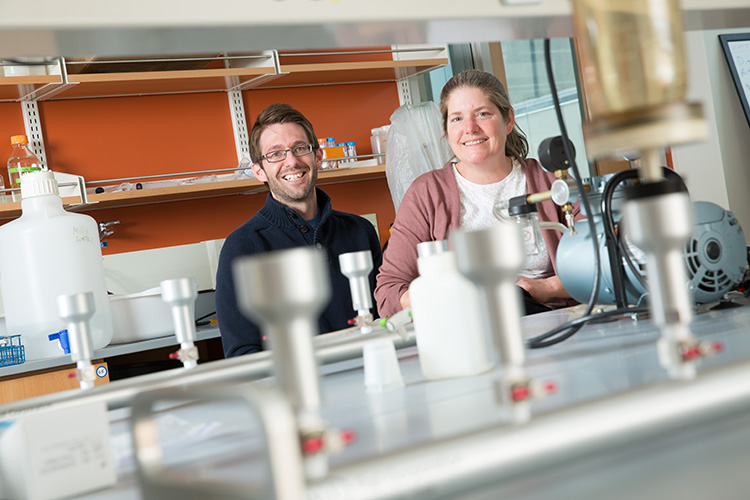Often extensive but unseen, sewer systems collect and transport wastewater in cities. In doing so, they prevent the rapid spread of diseases. Studying the microorganisms living among the vast network of pipes beneath a city can tell us a great deal about the health of its inhabitants. In addition, a growing number of studies indicate that sewer microorganisms can transform and/or remove pollutants, making the sewer network itself a full-fledged stage in water treatment.
School of Freshwater Sciences researchers Sandra McLellan and Ryan Newton have been studying the millions of microbes that live within the pipes. Their work regarding the monitoring of wastewater to detect levels of COVID-19 within a community has received widespread attention, and their ongoing research has far-reaching implications for wastewater management and the monitoring of antibiotic-resistant organisms. Their study “Guts of the Urban Ecosystem: Microbial Ecology of Sewer Infrastructure” was recently published in the American Society for Microbiology’s mSystems Journal.
The research team examined the sewer microbiomes of 71 cities across the United States and found that the microbiome composition was similar regardless of where samples came from. Their findings indicate that the sewer environment selects for a particular microbial community composition. A better understanding of this sewer microbial composition, including identifying which microbes are universally present and understanding how the microorganisms interact with each other, could lead to better wastewater management.
“Understanding the complex ecology of sewer infrastructure is critical for not only improving our ability to treat human waste and increasing the sustainability of our cities but also to create scalable and effective sewage microbial observatories, which are inevitable investments of the future to monitor health in human populations,” they wrote.
In addition to the research publication, graduate student Lou LaMartina published a short data announcement paper (“Full-Length 16S rRNA Gene Sequences from Raw Sewage Samples Spanning Geographic and Seasonal Gradients in Conveyance Systems across the United States“) about a dataset the scientific team compiled, which uses new advanced sequencing technologies to gain a higher resolution description of the microorganisms found in city wastewater systems. This work was in collaboration with the Great Lakes Genome Center.
